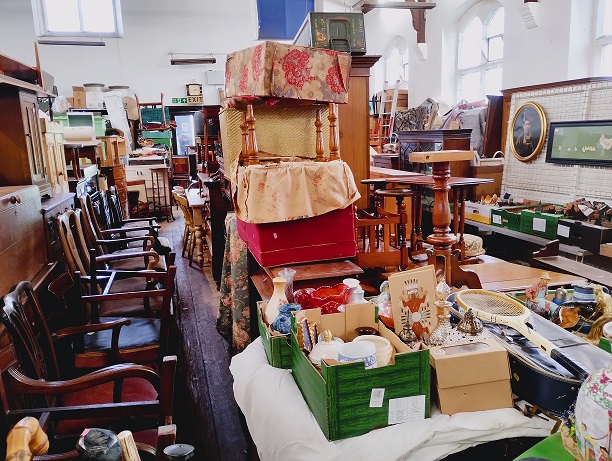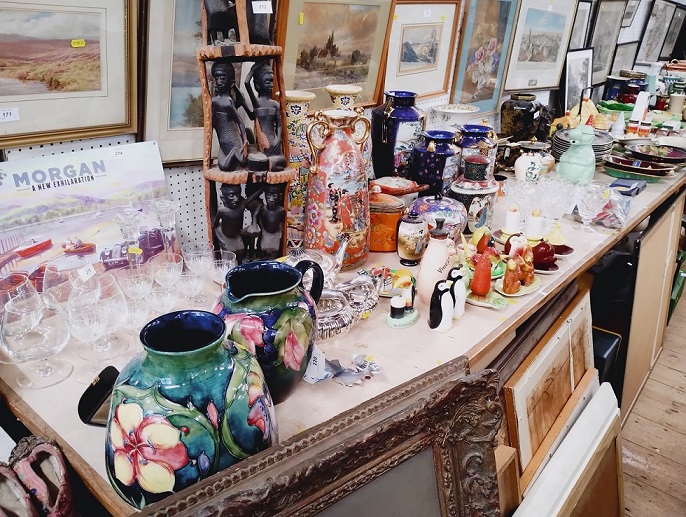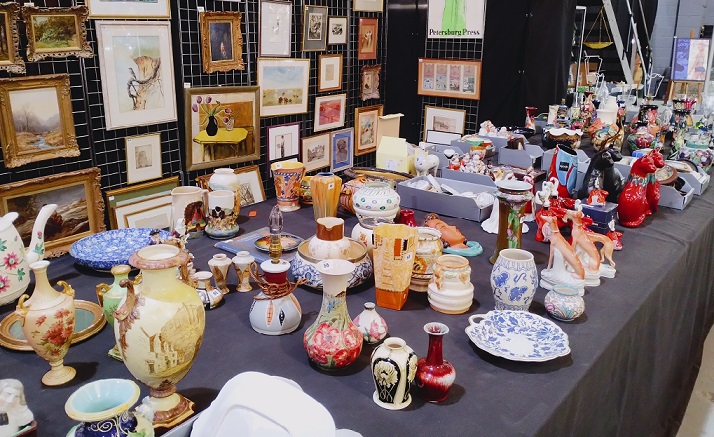This posting became much longer than I expected when I started it. To make it more readable I’ve split it into two parts. This, being Part One, covers things up to the actual auction day. Part Two, will follow shortly, and covers the auction day and paying for the lots you won.
Auctions are for anyone
When friends hear I go to auctions the commonest response I get is “I’ve never been to an auction, can anyone go?” A long time ago, I would have asked the same thing, so let’s be clear, answer is very much “Yes!”. Don’t be shy, don’t feel you be some sort of expert or collector or even that you have to bid on anything. First time visitors are always welcome, after all, you’re a potential customer and businesses need as many of those as they can get. Every auction house is different but the staff are generally polite, friendly and happy to answer any questions you have regardless of whether you’re a first time visitor or a regular.
Viewing days

There are usually one or two viewing days before an auction day. These are often mid-week, but for bigger auctions there will be some effort to have at least one late finish so people who are working can get along. Viewings are a relaxed opportunity for you, as a potential bidder, to walk around and inspect the items coming up. Don’t expect to be stood over whilst you’re viewing. You get a remarkable degree of freedom to look at and, should you wish, handle some really quite valuable things.
At a general auction you’re likely to see a bewildering range of stuff with potential values from a few pounds to a several hundred pounds or higher.

Few of the items on the table here will sell for more than a few pounds, but be careful how you handle the Moorcroft vase and jug at the front. They sold for almost £400.
General auctions can be an entertaining trip down Memory Lane. You’re bound to have most of the following thoughts at some stage:
- “I had one of those. I think I threw it out. Didn’t think it was worth anything”
- “I’ve got one of those, the estimate says £10-£20, I thought it was worth more than that”
- “Wow! I had one of those as a kid. I haven’t seen one in years”
- “My parents had one of those. I never liked it. I wonder what happened to it?”
More specialist auctions for such as glass, ceramics or jewellery tend to have items with higher estimates although even these include items to suit most pockets. I’m continually surprised at the range of subjects for specialist auctions, or sections within auctions. Toys probably didn’t surprise me, although the prices paid sometimes do. Not being a handbags person, I’m always amazed at the scale of the trade in second hand, designer bags.

At a viewing the most valuable items will usually be behind glass, be they small or large. Don’t let this put you off though. If you want to handle an item to get a closer look, ask one of the staff to get them out for you. You’re not being rude, it’s perfectly normal to want a close look if it’s something you’re potentially bidding on. You just have to be careful and respectful of the items you’re handling, but that’s true for an item of any value. If you’re unsure about something, again, it’s quite normal to ask if there is any more information, although the description in the catalogue is the one the auction house can be held to if there is an issue later.
If you have an interest in a particular area, specialist auction viewings are also an amazing opportunity to get close to items you’ve probably only seen in pictures or in a museum.
Catalogues, descriptions, condition reports and estimates
Today most auctions are online, so you can sit at home and browse the full catalogue including photographs with a brief description of every item before you attend a viewing. If you prefer a paper copy there will usually be a printed catalogue available when you visit. Printed catalogues can range from a simple listing that may be free (or at least very cheap) up to a full colour, glossy brochure with lavish illustrations running to many pages. These tend to be more expensive, although if you buy items from a good auction house you might get the catalogue sent to you for free. Specialist auction catalogue can be good reference works for what is available in the market and what you might expect to pay.
Most lots will only have a short description. However, a good auction house should provide more detail and usually some reference to the item’s provenance for the most valuable items in a sale.
Condition reports are much more problematic. All auction houses should provide condition reports if you ask for them, but few give them by default. For older items with some wear, the degree of wear or damage becomes very subjective. I guess this is why reports are not given for everything but Buyer Beware! Until you’re confident in what you’re doing, I wouldn’t buy anything unless I’d held it.
It’s not just the condition of an item that can be hard to judge from photographs. Colours, sheen and the general appearance of items can be very different in the flesh compared to online. In particular, scale can be terribly hard to judge, even when dimensions are given. I should stress this isn’t a case of embelished photographs, often items look better in real life than they look in a photograph. I’m learning from writing this blog that photographing ceramics and glass well is a nightmare.
Some auction houses provide an estimate for every lot, some only start when they expect items to sell above maybe £100. Estimates tend to be a range of values, say £100 to £150. Anything expected to sell for under about £100 will generally only get an estimate if the seller has asked for a reserve (the minimum bid that will trigger a sale). Reserve values are not usually publicised but if an estimate is given then expect the reserve to be at least 80% of the lower estimate. As an example, if there is an estimate of £100 to £150 you should assume there is a reserve around £80 to £90 and even if the bidding starts below this, if the bidding stops without reaching the reserve the item will not be sold.
The upper estimate has no real meaning. Some auction houses use a low upper estimate to encourage people to bid, even though the auctioneer knows the selling price will be well above it. If you find something you really like with a low estimate it’s a sad fact that someone else has probably seen it too. Along with everyone else who has bid at an auction you’ll quickly develop a list of things you’ve been out bid on that went way over the upper estimate.
So that brings us on to the actual auction and the fun part – bidding. For details of that, see Part Two of this guide.